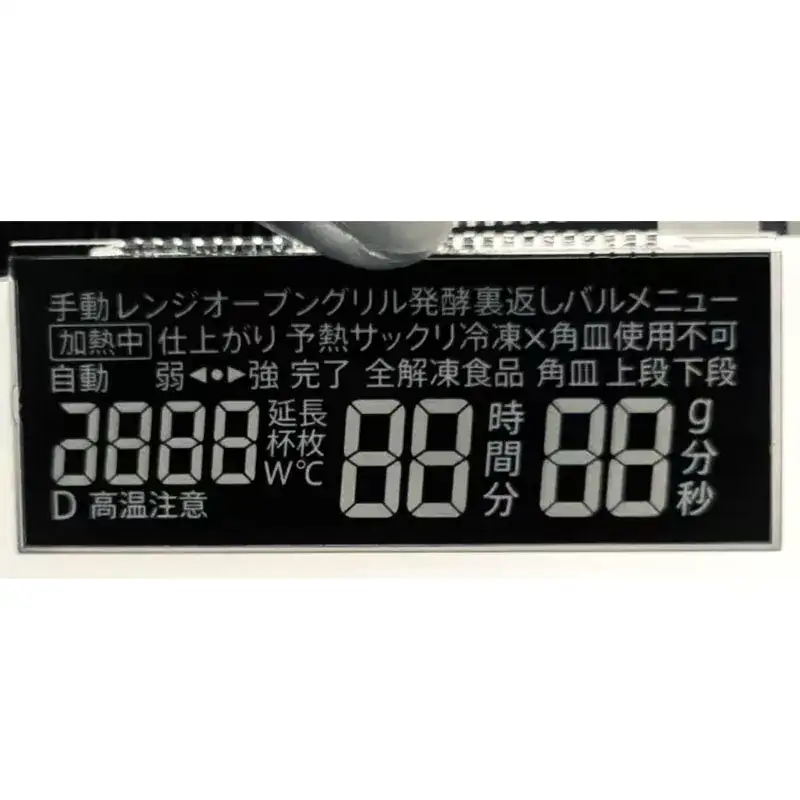
- English
- Español
- Português
- русский
- Français
- 日本語
- Deutsch
- tiếng Việt
- Italiano
- Nederlands
- ภาษาไทย
- Polski
- 한국어
- Svenska
- magyar
- Malay
- বাংলা ভাষার
- Dansk
- Suomi
- हिन्दी
- Pilipino
- Türkçe
- Gaeilge
- العربية
- Indonesia
- Norsk
- تمل
- český
- ελληνικά
- український
- Javanese
- فارسی
- தமிழ்
- తెలుగు
- नेपाली
- Burmese
- български
- ລາວ
- Latine
- Қазақша
- Euskal
- Azərbaycan
- Slovenský jazyk
- Македонски
- Lietuvos
- Eesti Keel
- Română
- Slovenski
- मराठी
- Srpski језик
The Market Demand for In-Vehicle Passive Lcd Modules Has Exploded
2025-07-25
Dear friends, have you noticed that there are more and more screens in cars now? From the earliest small LCD screen in the center console to the ultra-wide screen that runs through the entire instrument panel, the in-vehicle display market is really getting bigger and bigger. Today, let's talk about the "Passive LCD Module" in the automotive field and see why it has become the new darling of the industry.
What is Passive LCD? What's good about it?
First of all, the biggest difference between Passive LCD (passive liquid crystal display) and Active LCD (active liquid crystal) used in our mobile phones is the different driving methods. Simply put, Passive LCD is like an honest person who "saves fuel". It does not require complex driving circuits, has low cost and low power consumption, and is particularly suitable for scenes that do not require frequent refreshes.
Many low-end models and center console sub-screens are now using this technology. For example, the small screen in your car that displays fuel consumption may be a Passive LCD module. Although it can't be as black as OLED, it is durable and durable, and the unit price is about 30% cheaper than Active LCD.
Three major trends in the in-vehicle display market
Now car companies are engaged in "screen competition". How fast is the growth of this market? Data shows that the global in-vehicle display market size will exceed US$20 billion in 2024, and the annual compound growth rate will remain above 8%. Passive LCD mainly occupies three key scenarios:
Instrument panel display: Although full LCD instrument is a major trend, many economy cars are still using Passive LCD as the basic model
Central control sub-screen: More and more cars are starting to use "triple screens" on the center console, and many auxiliary screens on both sides use Passive LCD
Rear entertainment system: The screen for rear passengers to watch videos does not require a high refresh rate, and Passive LCD can completely hold it

Why do car companies love to use Passive LCD?
There are several hard-core reasons here:
Cost advantage: The price war in the current car market is fierce, and saving costs is the kingly way. A Passive LCD module may only cost 60% of the price of an Active LCD
High reliability: The use environment of automobiles is harsh, and Passive LCD does not have complex driving circuits, so the failure rate is lower
Low power consumption: New energy vehicles are sensitive to battery life, and the power consumption of Passive LCD is only about 1/3 of similar products
However, it also has shortcomings, such as low contrast and slow response speed. Therefore, high-end models still prefer Active LCD or OLED.
What will happen in the future?
New technologies are making breakthroughs. Although Passive LCD is a bit "rustic" now, new technologies are giving it a second spring. For example:
Microlens array technology improves the viewing angle problem of Passive LCD
The new reflective LCD has greatly improved visibility under strong light
Flexible Passive LCD has begun trial production and may be used on curved dashboards in the future
The industry predicts that by 2027, the share of Passive LCD in the automotive market will still remain at around 25%, especially in developing countries. After all, not all consumers need 4K high-definition screens, and practicality and cost-effectiveness are king.
As a professional manufacturer and supplier, we provide high-quality products. If you are interested in our products or have any questions, please feel free to contact us.




